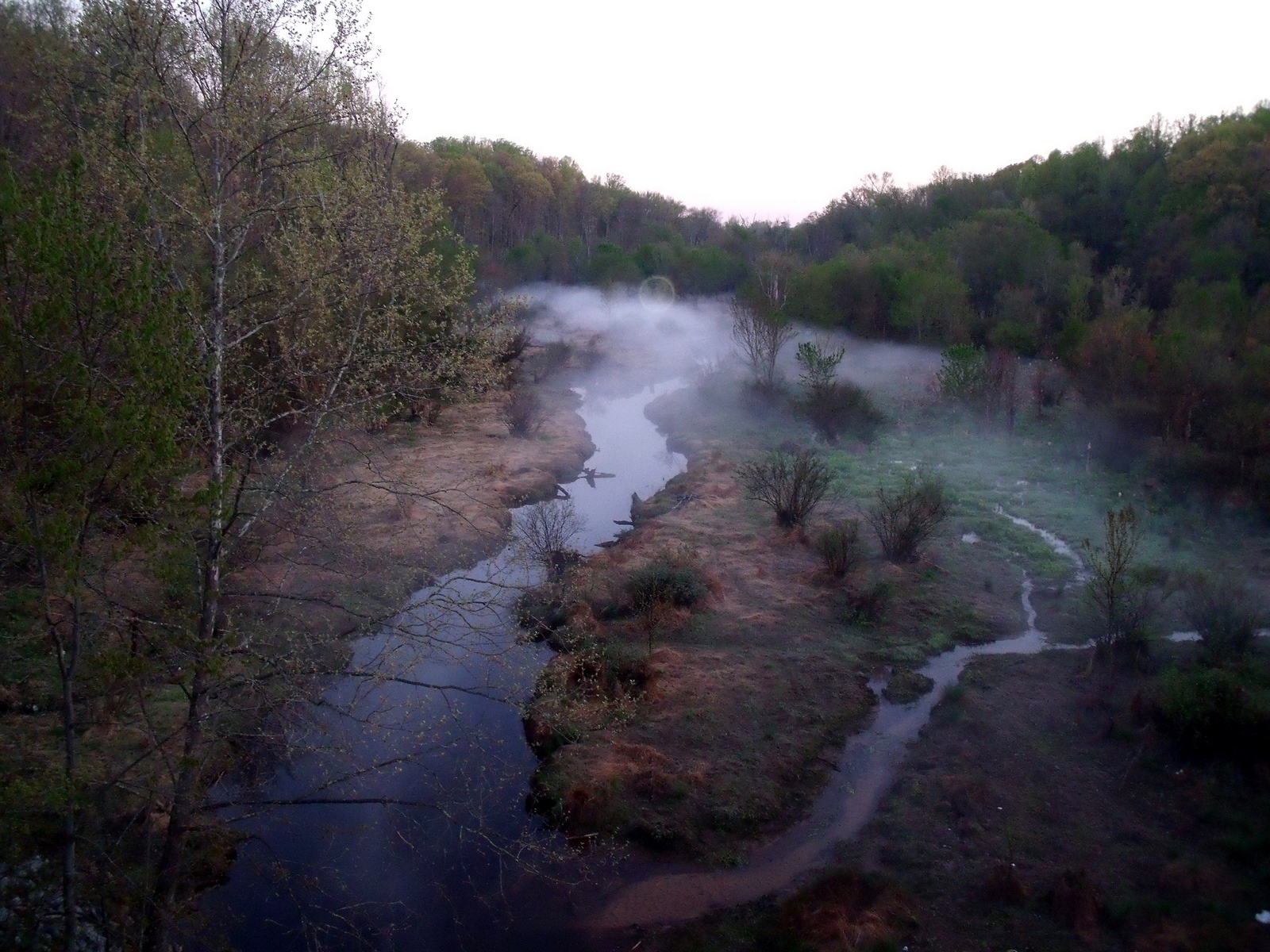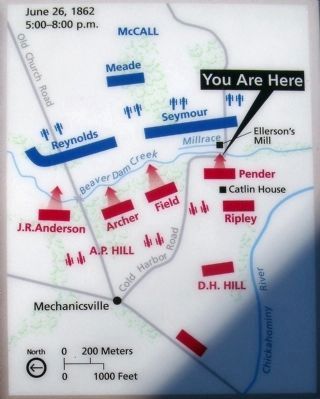The situation was this: ever since the Battle of Seven Pines, or Fair Oaks, at the end of June, the Union Army of the Potomac, even though it outnumbered the Confederate force sitting between it and the Southern capital of Richmond, Virginia, sat idle. The dramatic ride around the Union army by J.E.B. Stuart and his Southern troopers in the middle of June revealed the particular dispositions of this hostile host to the new commander of the Confederate army, Robert E. Lee. He realized that General McClellan had only left a single corps, the V Corps, north of the Chickahominy River -- not only meaning that this corps was isolated, but meaning that but a single corps protected the Union supply line back to West Point, Virginia. Lee recognized an opportunity here, even if his Southern force was outnumbered. If the Confederate massed their forces and destroyed the isolated V Corps, McClellan and the rest of the Army of the Potomac would be cut off from their supply line, and would have little choice but to fall back from the gates of Richmond.
Lee, with a reputation for being timid, would quickly convince both friend and foe of his aggressive streak with the attacks that would follow during the Seven Days. To add to the numbers of the Army of Northern Virginia, Lee also directed Stonewall Jackson's victorious Valley Army to join his force for the fighting that was to come to the Richmond front.
In launching an attack on the V Corps north of the Chickahominy, Lee took a great risk, as he left only 25,000 men defending lines directly in front of Richmond south of that river, in the face of the bulk of McClellan's 100,000 man force. Lee counted on McClellan having ceded the initiative. He was right.
On 26 June 1862, the Seven Days Battles began with the attack on the Union V Corps of US General Fitz John Porter at Mechanicsville, positioned on a ridge overlooking the Beaverdam Creek. If the gentle reader ever gets the chance to visit this field of battle, it is memorable, indeed, and is today a part of the Richmond National Battlefield Park. The ground very much favored the Union defenders, but Lee planned for Jackson's Valley force to arrive beyond the right flank of the Yankee host -- a right flank with J.E.B. Stuart found to be devoid of a cavalry screen. Tragically, for the attacking forces of the division of A. P. Hill, Jackson's men did not arrive in time, and Confederate losses along the Beaverdam Creek at Mechanicville were heavy, indeed. The casualty count was 400 US to 1,300 CS lost. It was one of the least impressive moments in the career of Stonewall Jackson.

Can you imagine crossing this creek under fire to storm the right on the right? That was the task of the division of CS General A. P. Hill at the Battle of Mechanicsville or Beaverdam Creek, 26 June 1862.

This map, from a sign at the battlefield, shows the particular dispositions of the battle.
This link provides an account of the fighting at Mechanicsville, or Beaverdam Creek, as presented by the National Park Service:
http://www.cr.nps.gov/hps/abpp/battles/va016.htm

Map showing the actions at Mechanicsville on 26 June and Gaine's Mill on 27 June.
Despite the heavy loses for the Southern forces, the V Corps fell back to a new defensive position at Gaine's Mill near Cold Harbor, Virginia. Here, the next day, another Confederate attack would pummel and finally overwhelm the V Corps.
For the reader that might like to read about the modern sites of these battles, the site of the Richmond National Battlefield Park is most helpful:
http://www.nps.gov/rich/index.htm
Live well!
No comments:
Post a Comment